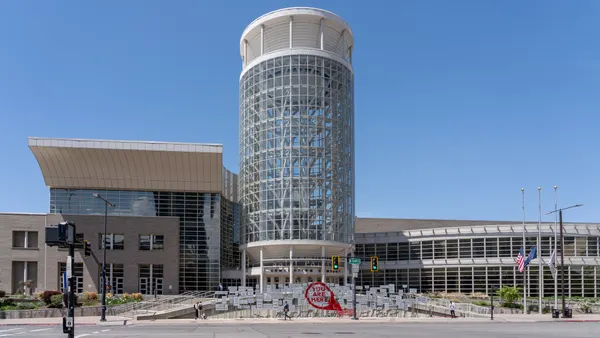Editor's note: This article was originally published in American City & County, which has merged with Smart Cities Dive to bring you expanded coverage of city innovation and local government. For the latest in smart city news, explore Smart Cities Dive or sign up for our newsletter.
The earth’s population is right around 7 billion, and projected to grow to nearly 11 billion by the next century. Needless to say, it’s going to be getting a little crowded on planet earth. So where are all those new people going to live? In the ocean?
Well. Maybe.
Architect Buckminster Fuller sought to mitigate this problem back in the 1960’s when he designed Triton, a city intended to float off the coast of Tokyo, according to Factor. The community was considered (but never commissioned) by the U.S. government.But the idea hasn’t been ruled out. In his book, Critical Path, Fuller writes, “Three-quarters of our planet Earth is covered with water, most of which may float organic cities. Floating cities pay no rent to landlords. They are situated on the water, which they desalinate and recirculate in many useful and non-polluting ways.”
This isn’t just one man with a maritime dream. There’s an institute dedicated to it. Most recently, the Seasteading Institute commissioned DeltaSync, a premiere Dutch water architecture firm, to design a concept city and assess its feasibility. The report can be downloaded here.
The institute claims the first oceanic city could only be a few years away. What do you think? Leave a comment below.











